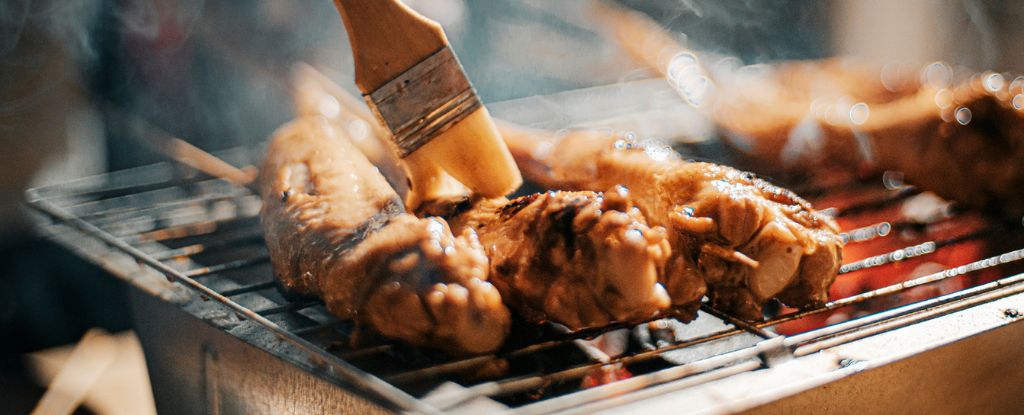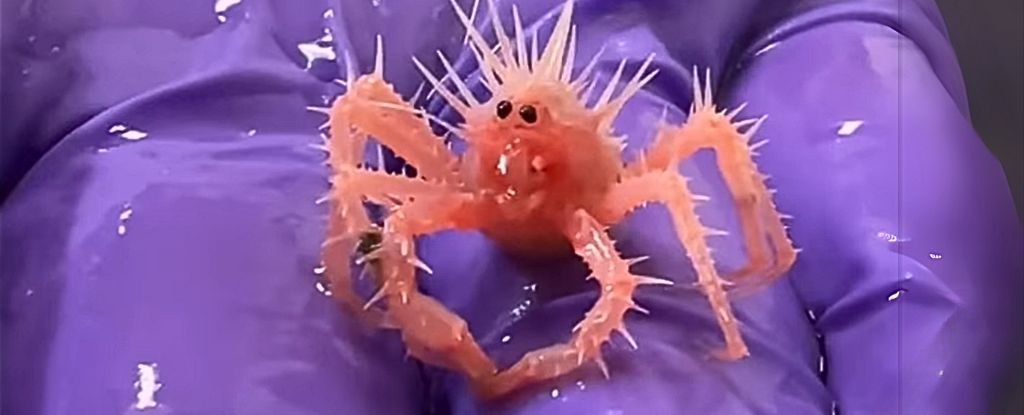Early in the summer of 2022, a family of nine gathered for a summer reunion in South Dakota. On the menu for dinner were black bear kebabs – the meat proudly hunted and harvested by one of the attendees on a trip to Canada weeks before.
The kill was kept frozen, just as the hunting guide in northern Saskatchewan had advised, but back in the United States, when the delicacy was thawed, cooked, and served, it wasn’t just bear that made it to the plate.
Tiny parasites had hitched a ride, too.
A few days later, the diners began to fall ill with a flu-like sickness. Three of the attendees had relatively mild symptoms that resolved on their own. Another three were hospitalized.
One unfortunate family member, a 29-year-old man, sought medical aid four times and returned hospital twice with a fever, severe muscle aches and pain, swelling around the eyes, and an elevated white blood cell count. On his second trip, baffled by his symptoms, doctors learned that he’d eaten bear meat.
The knowledge kicked off a new investigation. The US Centers for Disease Control and Prevention (CDC) obtained a sample of the family’s frozen kill, some of which hadn’t been cooked yet.
Using a microscope investigators found moving roundworm larvae, still wriggling in the bear meat after 110 days in a household freezer.
Genetic testing confirmed this was Trichinella nativa, a parasite with high resistance to freezing temperatures that is commonly found in wild boar, fox, walrus, and bear. Another Trichinella species can also infect pigs.
Human infections in North America are rare. The US has reported only about 20 annual cases of ‘trichinosis’ on average since 2010. An outbreak among numerous individuals is quite unusual.
Four weeks after the initial onset of symptoms, all six individuals that fell ill after the family reunion in South Dakota were tested for Trichinellosis. Only two received positive results, but four other individuals are considered probable cases, as experts say they met clinical and epidemiological criteria.
“Laboratory confirmation can be challenging because of the limited sensitivity of antibody testing early in illness,” researchers at the CDC explain.
All three patients that wound up in hospital after eating the bear meat received trichinellosis-directed treatment and have since recovered.
Interestingly, the CDC investigation found that six of the eight family members interviewed only ate vegetables, not the bear meat, at the reunion. Experts at the CDC suspect that the vegetables served were contaminated by the meat at some point during the cooking process.
“The meat was initially inadvertently served rare,” reads the CDC report, “reportedly because the meat was dark in color, and it was difficult for the family members to visually ascertain the level of doneness. After some of the family members began eating the meat and noticed that it was undercooked, the meat was recooked before being served again.”
But at that point, it may have been too late.
The story, while certainly unusual, is a good reminder to all those who eat wild meat: not all parasites are killed in a freezer or on the barbecue.
The warning is especially important for those in northern Saskatchewan communities who feast on wild bear. This isn’t the first time that bears hunted in the North American region have transferred T. nativa to humans.
In 2000, bear meat infected with the parasite landed five people in hospital after it was served to a group of 78 in northern Saskatchewan. At the time, public health officials suspected that another 19 people who ate the meat had ‘probable cases’, and 28 had ‘possible cases’ of trichinosis. Luckily, most patients’ symptoms had fully resolved by the final follow up, but the infection can be fatal in severe, untreated cases.
“Persons who consume meat from wild game animals should be aware that adequate cooking is the only reliable way to kill Trichinella parasites and that infected meat can cross-contaminate other foods,” warns the recent report from the CDC.
That means cooking meat until the internal temperature is greater than 74°C (165°F). Happy feasting!
The report from the CDC can be found here.





